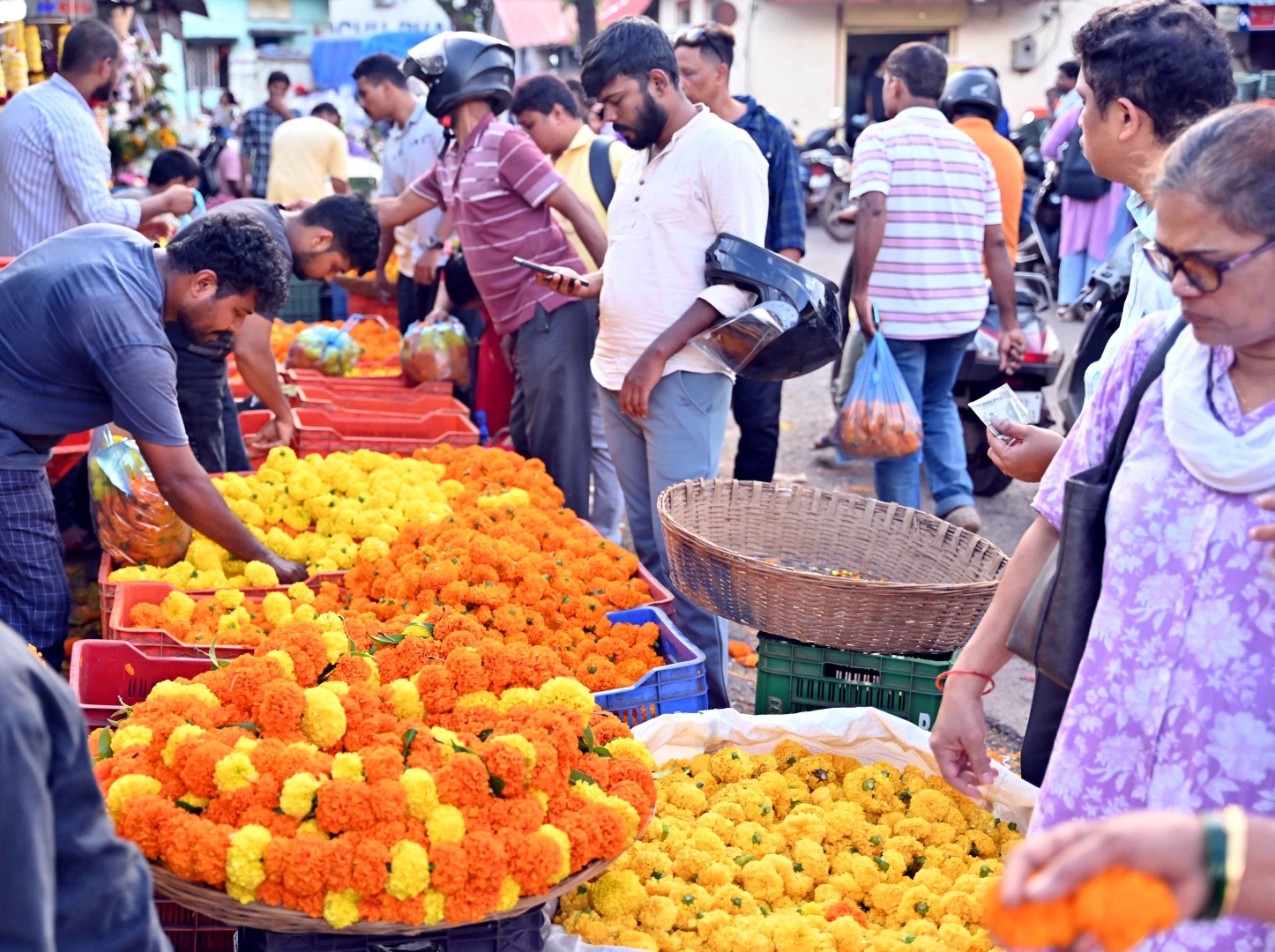Vendors struggle with price competition, but quality keeps demand alive

Festive Hues: Marigolds on display for sale near the Panaji KTC bus stand on the eve of Dussehra, Wednesday.
PANAJI
Amid the festive season, marigold flowers grown in Goa are selling at prices ranging from Rs 140 to Rs 150 per kg, higher than flowers imported from neighbouring Karnataka, which retail at about Rs 120 per kg. The reason, the Agriculture department explained, lies not just in freshness but also in the preference of Goans to support local farmers.
At a press conference on the eve of Dussehra on Wednesday, Director of Agriculture Sandeep Fol Dessai explained that while the base price at the farm level is between Rs 80 and Rs 100 per kg, the produce commands a premium in the market.
“If the market price is Rs 120, ours will always be superior by at least Rs 10 to Rs 20. People willingly pay more because the flowers are fresh, bright yellow or orange, and cultivated by Goans. There is strong community support for our farmers,” he said.
But amid the festive competition, many local vendors have stated that they are being squeezed by cheaper imports. In Panaji market, vendors pointed out that marigold garlands or torans from outside the State are being sold at just Rs 50 per metre.
“Each toran costs about Rs 50, which outside vendors are offering. Their flowers are smaller and less vibrant than our local marigolds, but customers are still buying them. We are then forced to match the price or sell only slightly higher,” said Laxman, a vendor from Panaji.
He recalled that in previous years, local torans would fetch anywhere between Rs 100 and Rs 150 during the festive peak, providing an important source of seasonal income. “Still, we try to maintain the quality, because Goan flowers are always bigger and brighter,” he added, while also mentioning that non-Goan vendors have been using the roadside spaces to sell their products.
“Our local women also sell on the roadside besides the market, but the competition, despite the quality, is affecting our earnings,” another vendor said. The agriculture officer said that the local bodies should intervene to resolve the issue.
Meanwhile, as the crop has also become an attractive option for youngsters, he added that its preparation in just 75 days makes it a short-duration crop with high earnings.
Traditionally, marigold cultivation in Goa was limited to the monsoon season, with sales peaking at Dussehra and Diwali. But trials conducted at the Goa College of Agriculture last year showed good flowering during the Rabi (November-December) and summer (April-May) seasons as well. This has opened the door for extended cultivation beyond the festive window, the director said.
Two main colours dominate the fields: yellow varieties such as ‘Kolkata Yellow’ and ‘Tennis Ball’, and orange varieties including ‘Pitambari’, ‘Kolkata Orange’, ‘Ashtagandha’ and ‘Solo’. Fol Dessai said the quality matches that of flowers from outside the State, while ensuring that money circulates within Goa.
“Through this initiative, we aim to promote Swayampurna Goa. The more Goans buy from Goans, the more our local economy strengthens,” he added.
At present, large-scale cultivation is concentrated in Sanquelim and Valpoi, with farmers also active in Dharbandora, Canacona, Sanguem and even parts of Bardez. The Kunbi farmers are also finding space in the growing marigold business.